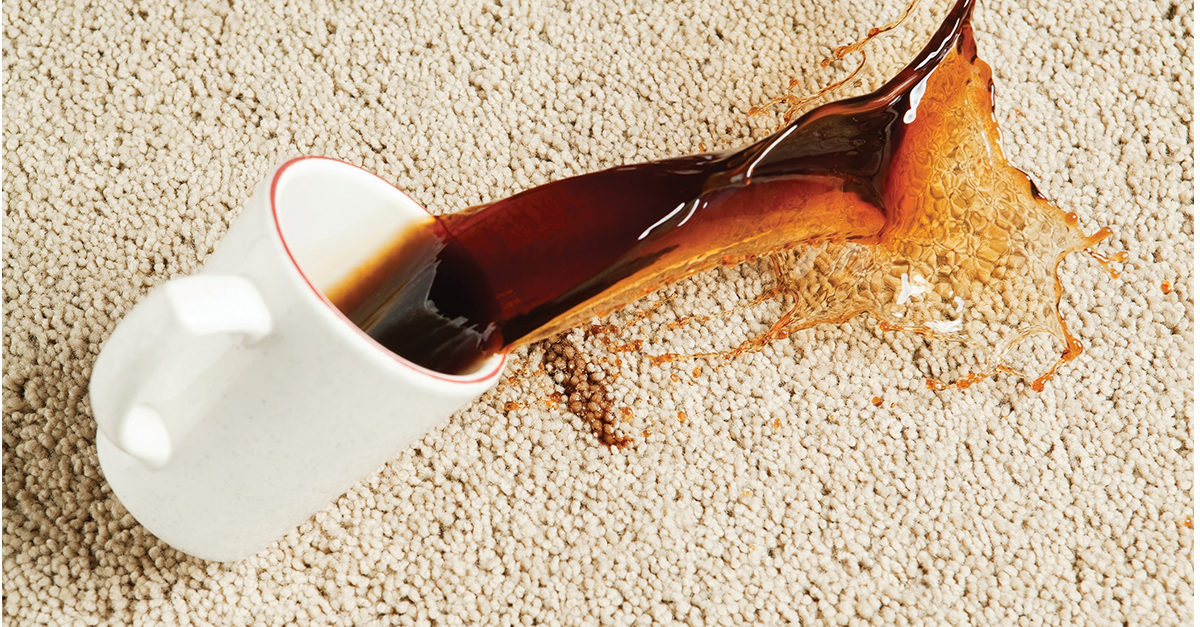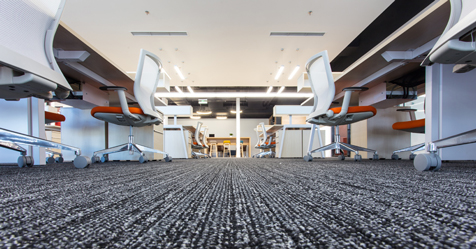I’m sure most of us have heard the expression, “Location, location, location.” It’s the mantra of the real estate industry, and means one thing for real estate professionals: Two identical houses can have different values based solely on their location. In fact, because they believe location is so important, this mantra is repeated three times for emphasis.
When it comes to carpet care, cleaning professionals may also hear this expression, but in this case, it has a totally different meaning. When referring to carpet and carpet care, it means:
- Certain carpeted locations will typically become more soiled with spots than others.
- Certain carpeted locations will experience similar soiling and spotting over and over again.
- Certain carpeted locations will need far more care and attention on a regular basis than other areas.
If you picture some of the facilities you now clean and maintain, you likely can identify some of these locations already. However, prepare yourself for some surprises. Some of the cleanest areas of a facility may not only have spotting problems, but also what could be some of the most unusual spotting challenges.
The Impact of Office Design
Different facilities may experience many of the same soiling problems and in the same types of areas because building tenants use these areas in the same general ways. For instance, most facilities have some sort of watering hole where people gather to talk and drink coffee. Also, many commercial facilities, especially office locations, are designed in similar ways. So we can expect the same spotting issues to occur.
However, we must also realize that office designs are changing. What has evolved in the past decade is the open office space, which is replacing individual offices. Instead of one person per office, we now have many people working in the same general area. With the new open space offices and the different ways that offices are being designed and used today, expect new carpet locations to become problem areas that experience repeated spotting on a regular basis.
Identifying Spot-Prone Areas
Now that we have an understanding of how “location, location, location” applies to carpet, let’s look at some problem areas to see how we can keep them clean and possibly even eliminate soiling and spotting issues.
The following are the most spot-prone areas in commercial facilities:
Entryways/foyers: The big concern here is not necessarily dry soil, which can be removed with vacuuming, but rather, soils such as grease, oil, or mud, as well as plant materials that are walked onto the carpet. Making matters worse, this type of soiling is often ground into the carpet with foot traffic, which can make it harder to remove.
Hallways: Carpeted hallways leading to and from kitchen and food service areas are invariably sprinkled with spots from food items and beverages, especially coffee.
Carpeted kitchens/food service areas: These areas are spot-prone; most spots are food- and beverage-related, such as juices, coffee, and other drinks, as well as condiments like ketchup or mustard.
Transition areas: This is where a hard-surface floor transitions into a carpeted area. Dry and wet soils, as well as residue from floor cleaning chemicals, often end up on the nearby carpet.
Water coolers: Water coolers are often where people gather to talk, sometimes even with a cup of coffee. Some coffee invariably spills on the carpet.
Copiers: Copiers are another gathering point in office buildings where people talk and drink coffee, but another problem is that toner often finds its way onto the carpet. Toner and coffee are a bad combination and can be difficult to remove.
Conference rooms/executive offices: These are our surprise areas. Executives and office staffers often polish up their shoes before work or meeting in an executive suite or a conference room. Some of that polish invariably ends up on the carpet. Additionally, users often consume coffee and various foods while in the conference room, either during a meeting or while using it as a makeshift lunchroom. As a result, this area can be subject to some of the worst carpet spotting and soiling.
Desks: Many people eat and drink at their desks and at standing work stations. As a result, food and spills are not only common, they are likely. The best way to deal with this is prevention. Urge staff not to eat or drink at their desks, and in case they do, make sure plastic mats are installed under desk chairs. At least these may catch the mess before it hits the carpet.
Addressing the Challenge
Wherever possible, if matting can be installed in spot-prone areas—for instance, under a water fountain—the mat will get dirty and not the carpet. If these mats are rented, the cleaning professional will likely only need to vacuum the mat, while the actual spot removal and cleaning of the mat will be the rental firm’s concern.
If the same type of spotting problems, such as coffee stains, occurs in the same areas on a frequent basis, we will likely already know what spotting solutions to use and how to properly use them. There is no need for testing to determine the spot or learning how to use a new spot remover.
However, because we are dealing with spotting problems in the same general locations on a frequent basis, using a portable carpet extractor may be an effective way to deal with the spotting challenge.
An extractor machine with a built-in heating element may prove effective when removing many types of spots, simply because it can improve the effectiveness of the cleaning chemicals. However, do not use hot water when removing a protein stain, such as food, eggs, etc. Also, also use cold water to treat blood spots on carpets. This is important because blood coagulates with heat, and cold will prevent the blood from permeating into the carpet fibers.
As to the actual procedure:
- Pre-spray the spots with an effective carpet cleaning solution.
- Allow for appropriate dwell time.
- Push the extractor’s wand forward to apply moisture to the spotted areas.
- Pull the wand back to extract the moisture, collecting the moisture, cleaning solution, and the soiling.
- Repeat as needed.
This process may also help reduce the reappearance of spots because it cleans thoroughly and leaves no residue. Chemical residue often remains in the carpet after a manual spot cleaning, which in turn causes rapid re-soiling of the problem area and attracts fresh spots.
The Inevitable
Spots are inevitable, but with the right approach, it’s possible to ensure they remain manageable.




